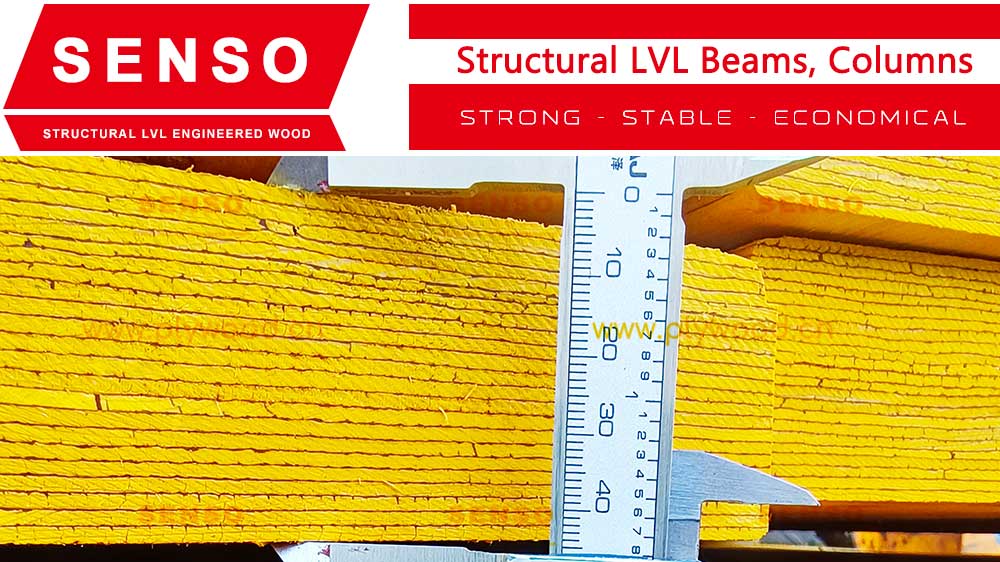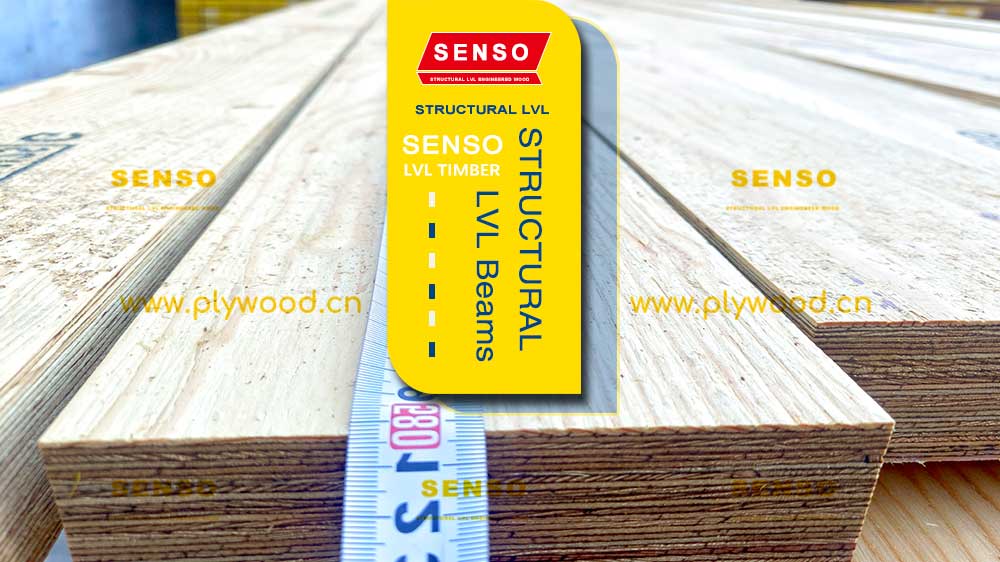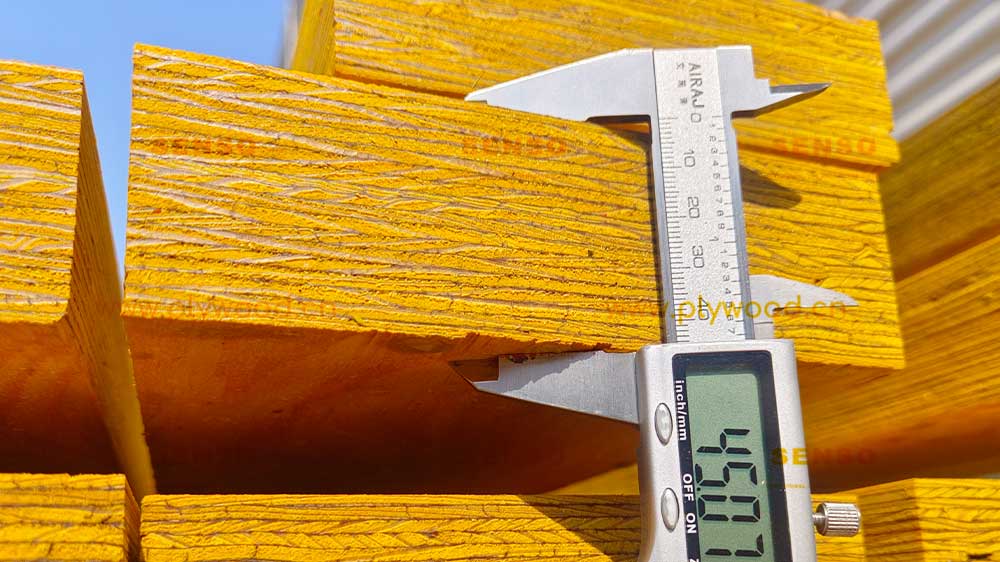What are Engineered Wood Beams?
Engineered wood beams are structural members made by bonding layers of wood veneers, strands, or fibers with high-strength adhesives. These beams are designed to provide consistent quality, high strength, and dimensional stability, making them ideal for use in load-bearing applications. Engineered wood beams come in various types, including LVL (Laminated Veneer Lumber), glulam (glue-laminated timber), and other composite wood products. These beams are commonly used in residential, commercial, and industrial construction for floor joists, roof supports, and structural frameworks. Engineered wood beam are favored for their predictable performance, versatility, and ease of use, making them a vital component in modern construction.
Advantages of Engineered Wood Beams
Engineered wood beams offer several advantages over traditional solid timber beams, making them a preferred choice for many construction projects. Their strength, reliability, and efficiency make them an essential element in modern building practices.
1. Consistent Quality and Strength
One of the most significant advantages of engineered wood beam is their consistent quality. Unlike solid timber, which can have natural imperfections such as knots and inconsistent grain patterns, engineered wood beam are manufactured to strict standards. This ensures that each beam has uniform strength and performance characteristics, reducing the risk of structural failures.
2. Superior Load-Bearing Capacity
Engineered wood beams are designed to handle heavy loads, making them ideal for use in structural applications. The layering process used in LVL and glulam beams results in a product that can support significant weights without bending or warping. This makes engineered wood beam suitable for use in load-bearing walls, roof supports, and floor joists.
3. Versatility in Design
Engineered wood beams are available in a wide range of sizes and configurations, allowing builders to choose the perfect beam for their specific needs. Whether it’s a long-span roof beam or a floor joist for residential construction, engineered wood beam can be customized to meet the requirements of the project. Their versatility also makes them suitable for both residential and commercial applications.
Engineered Wood Beams vs. Solid Timber Beams
When comparing engineered wood beam to traditional solid timber beams, several key differences become apparent. Each option has its own set of advantages and disadvantages, depending on the specific requirements of the construction project.
Strength and Stability
Engineered wood beam are designed to be stronger and more stable than solid timber beams. The process of layering wood veneers or strands and bonding them with adhesives results in a beam that is less prone to warping, twisting, or shrinking. This stability makes engineered wood beam a reliable choice for load-bearing applications, where consistency and strength are essential.
Cost Considerations
While engineered wood beams can be more expensive than solid timber beam, they offer greater value in terms of performance and durability. The uniformity of engineered beams means fewer structural issues down the line, which can save money on repairs and maintenance. Additionally, engineered wood beam are often available in longer lengths, which can reduce the need for additional supports and lower overall construction costs.
Types of Engineered Wood Beams
There are several types of engineered wood beams, each designed to meet specific structural requirements. Understanding the differences between these types can help builders choose the right beam for their project.
1. Laminated Veneer Lumber (LVL) Beams
LVL beams are made by bonding multiple layers of wood veneers together, with each layer’s grain running in the same direction. This creates a beam with high strength and consistent performance. LVL beams are commonly used in residential construction for roof supports, floor joists, and headers. Their strength and stability make them ideal for load-bearing applications.
2. Glulam Beam
Glulam beams are made by gluing together layers of timber, with the grain of each layer running parallel to the length of the beam. This creates a strong, flexible beam that can be used in a variety of applications. Glulam beams are often used in visible applications, such as exposed beams in homes or commercial buildings, where their natural wood appearance adds aesthetic value.
3. I-Joists
I joist are another type of engineered wood beam, consisting of a top and bottom flange made of LVL or solid wood, with a web of oriented strand board (OSB) or plywood in between. I-joists are lightweight and easy to install, making them a popular choice for floor joists and roof supports in residential construction.
Engineered Wood Beam vs. Glulam Beams
Engineered wood beams and glulam beams are both popular choices in modern construction, but they serve different purposes and have distinct advantages.
Manufacturing Process
The key difference between engineered wood beam like LVL and glulam beams lies in the manufacturing process. LVL beam are made by bonding thin wood veneers together, with all the veneers running in the same direction. Glulam beams, on the other hand, are made by stacking and gluing layers of timber, with the grain running parallel to the length of the beam. This gives glulam beams greater flexibility and a more natural appearance, making them suitable for both structural and aesthetic applications.
Applications
LVL beams are typically used in structural applications where high strength is needed, such as roof supports and floor joists. Glulam beams, on the other hand, are often used in visible applications where their natural wood appearance can be showcased. This makes glulam beams a popular choice for exposed beams in homes, commercial buildings, and other structures where aesthetics are important.
Applications of Engineered Wood Beam in Construction
Engineered wood beams are used in a wide range of construction applications, providing strength and stability where needed. Below are some of the most common uses of engineered wood beams.
Roof Supports
Engineered wood beam are commonly used as roof supports due to their ability to handle significant loads without bending or warping. Their strength and stability make them ideal for supporting roof structures, even in areas prone to heavy snowfall or strong winds.
Floor Joists
Engineered wood beams are also used as floor joists, providing a strong and stable base for flooring. Their consistent quality ensures that they can handle the weight of the flooring materials, furniture, and occupants without bending or warping.
Headers and Lintels
In residential construction, engineered wood beam are often used as headers and lintels to provide support above windows and doors. Their strength and stability make them ideal for these applications, ensuring that the weight of the structure is evenly distributed and that the building remains secure.
Benefits of Using Engineered Wood Beams in Construction
Engineered wood beam offer numerous benefits that make them a preferred choice for builders and architects. Their strength, versatility, and ease of use make them suitable for a wide range of construction applications.
Lightweight and Easy to Handle
One of the key advantages of engineered wood beams is their lightweight nature. Compared to solid timber beams, engineered wood beam are easier to transport and handle on-site, which can reduce labor costs and speed up the construction process.
Sustainable Building Material
Engineered wood beams are made from sustainably sourced wood, making them an environmentally friendly choice for construction. The efficient use of raw materials helps to minimize waste, and the engineered nature of these beams ensures that they have a long lifespan, reducing the need for replacement.
How to Choose the Right Engineered Wood Beam
Selecting the correct engineered wood beam is crucial for ensuring the structural integrity of a building. Several factors need to be considered when determining the appropriate beam, including the span, load requirements, and specific application.
Span Considerations
The span of the beam refers to the distance it must cover without additional support. Longer spans require larger beams that can handle increased loads without bending or breaking. Span tables are often used to determine the exact size required for a given load.
Load Requirements
Load requirements include both dead loads (the weight of the structure itself) and live loads (occupants, furniture, snow, etc.). The beam size must be sufficient to support the combined weight without exceeding its strength limits. It is essential to consult with an engineer or builder to determine the appropriate beam size for a given load-bearing application.
FAQs About Engineered Wood Beam
Q: What are engineered wood beams used for?
A: Engineered wood beam are used for load-bearing applications in construction, including roof supports, floor joists, and headers.
Q: How do engineered wood beam compare to solid timber beam?
A: Engineered wood beam are stronger, more stable, and less prone to warping compared to solid timber beam.
Q: Can engineered wood beam be used in exterior applications?
A: Yes, engineered wood beam can be used in exterior applications if they are properly treated to resist moisture and environmental exposure.
Q: What are the benefits of using engineered wood beams?
A: Engineered wood beam offer superior strength, consistent quality, and versatility, making them ideal for a wide range.
Post time: Jan-16-2025




